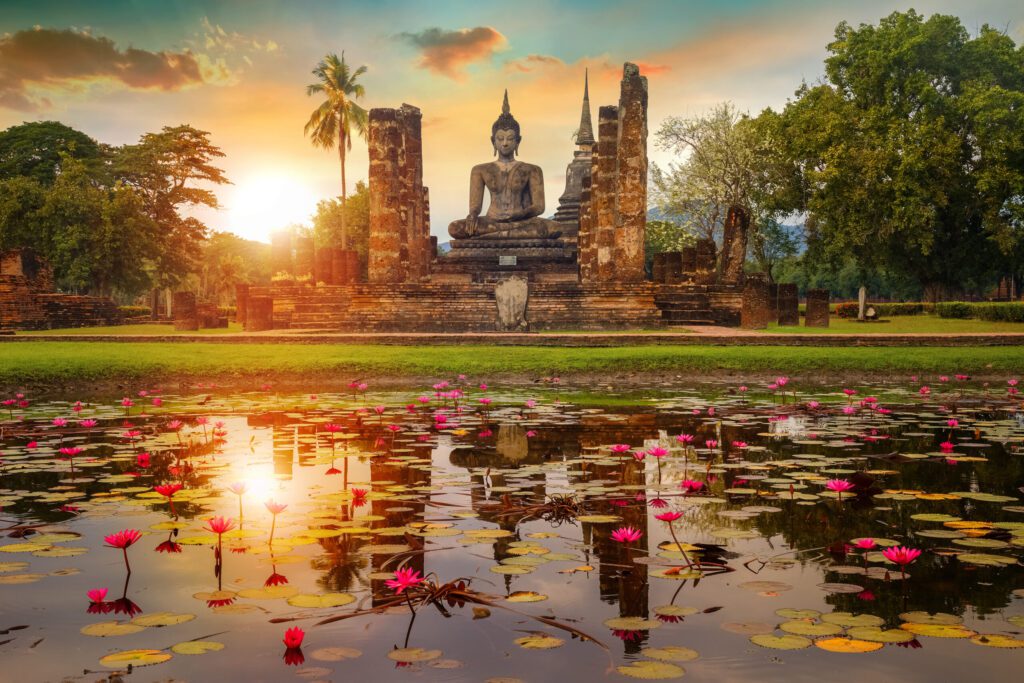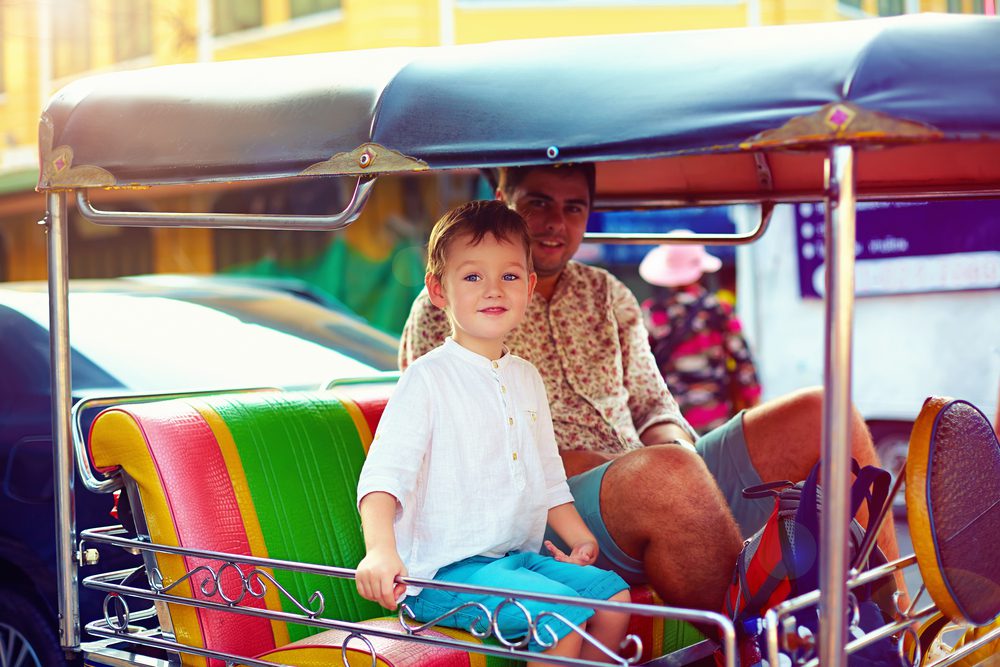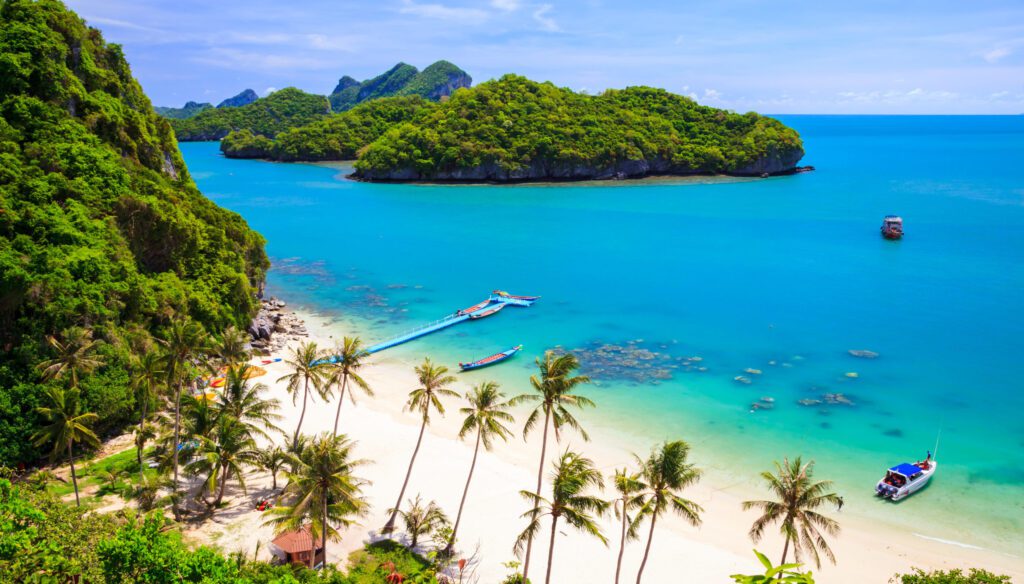a guide to Ayutthaya
Since the 14th century, when Ayutthaya became the second capital of Siam (today’s Thailand), Siamese arts and culture accumulated along the Chao Phraya River Valley. With 35 kings and countless battles along its 471 years as the capital, foreign traders knew the ancient city as one of the biggest and most prosperous in the east. Being an important trading port for Southeast Asia, Ayutthaya, a cosmopolitan capital, was culturally diverse. It was home to foreign travelers and traders from around the world like Chinese, Greek, Portuguese, French, Japanese, and Dutch.
Like many ancient cities, Ayutthaya rose and fell. Burmese conquerors sacked the old capital in the 18th century.
Today, Ayutthaya’s archaeological sites make it an unforgettable destination. The historic city of Ayutthaya is a UNESCO World Heritage Site. There are ruined palaces and temples, with the best among them being Wat Phra Si Sanphet, Wat Ratchaburana, and Wat Mahathat. The now ruined pagodas were once gilded and glittered as if made of gold. Standing among towering ruined pagodas, you can imagine how the ancient city lured all walks of life to its prosperous land. Merchants, priests, poets, outcasts, soldiers of fortune, and travelers from afar all headed to Ayutthaya.
Ayutthaya also has its share of contemporary history. Bang Pa-In Palace and Wat Niwet Thammaprawat are worth visiting to find a trace of European influence on 19th-century architecture.
Most people take a day trip to Ayutthaya to visit significant landmarks and historical sites. Still, you need two days or even a week to absorb its splendor and beauty.
With spectacular museums, fine dining restaurants, boutique hotels, ancient pagodas, and fascinating marketplaces, Siam’s old capital has a new life. Ayutthaya steals the hearts of all with its magic and unique charm, the same way it did 500 years ago.
Getting there
Ayutthaya is about 80 kilometers north of Bangkok and is accessible via expressways, waterways, and railway.
Mini-buses travel daily from Bangkok Bus Terminal (Mo Chit 2) to Ayutthaya.
The train is the cheapest and most scenic way to travel from Bangkok to Ayutthaya. Several trains head out daily from the Bangkok railway station (Hualamphong) and stop at the Ayutthaya railway station. The trip is about an hour and a half to two hours, depending on the service type.
Cruises running up the Chao Phraya River from Bangkok to Ayutthaya often stop at Bang Pa-In and historic temples along the way. Travelers need to book in advance as there are no scheduled services.
Getting around
Tuk-tuks, motorcycle taxis, boats, songthaew pickups, and local buses move people around Ayutthaya and beyond for fixed and negotiated prices. Bicycles are ideal for wandering around the historical park and temples.
Things To Do in Ayutthaya
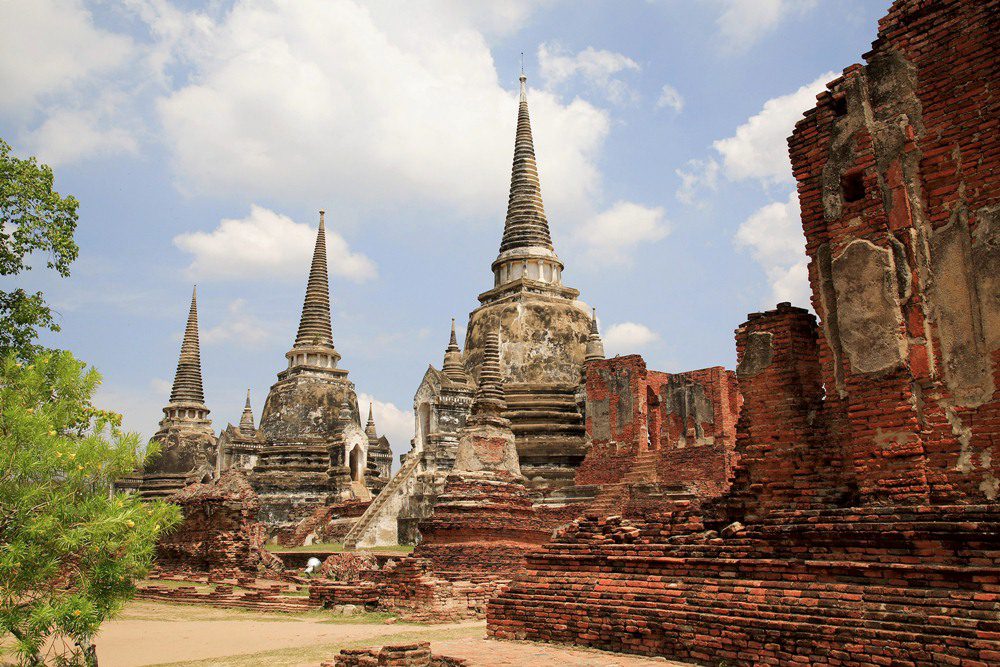
At this fascinating ruined temple in Ayutthaya’s historical city, three towering pagodas stand side by side in a row to frame Ayutthaya’s most picturesque view. The temple was built in 1448 and established on the ground of the old royal palace. It became the model for the Grand Palace and the Temple of the Emerald Buddha, founded almost 350 years later in Bangkok. Three towering stupas were established at different times to contain the ashes of the kings. This temple enshrined a 16-meter-high Phra Si Sanphet Buddha in standing posture and covered it with at least 143 kilograms of gold. The Burmese conquerors attacked and brought Ayutthaya to the ground in 1767. The inhabitants had to abandon the burned down city. The holy temple of three pagodas is a testimony to Ayutthaya’s wealth and wisdom.
Wat Phra Si Sanphet, the northern end of Si Sanphet Road, Ayutthaya
Opening Hours: 8am-6.30pm
Admission Fee: 50 Baht
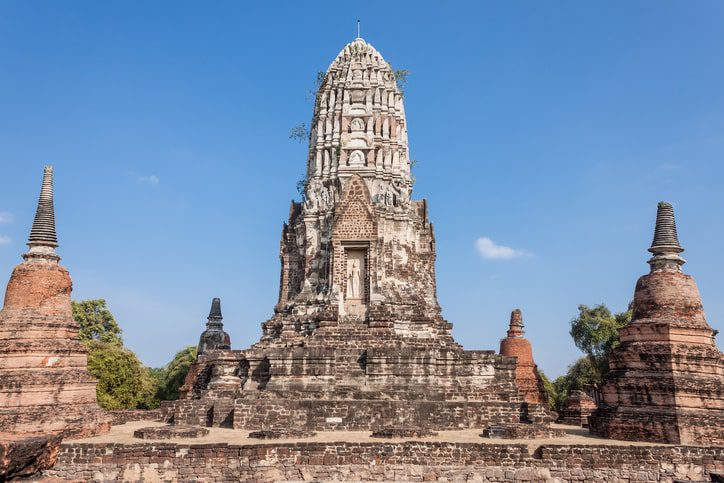
In 1424, the historic temple was built on two Ayutthaya princes’ cremation ground—both died in their duel for their dying father’s throne. The biggest draw to Wat Ratchaburana is not Ayutthaya’s brother against brother battle, but the treasures buried in the crypt under the gigantic pagoda. In 1957, treasure hunters broke into the tomb and looted various gold artifacts. One of the thieves, wearing a gold crown and wielding a gold sword, was caught at Ayutthaya’s local market. According to the Fine Arts Department records, the crypt of Wat Ratchaburana contained around 100 kilograms of gold artifacts in various forms: royal regalia, the gold stupa, and Buddha images. Unfortunately, the officers could retrieve less than 20 percent of the stolen items. Many of the retrieved artifacts are now on display in Chao Sam Phraya National Museum. With Indiana Jones and Holy Grail in mind, visitors may follow the narrow stone path to the crypt.
Wat Ratchaburana (3 minutes walk from Wat Mahathat), Chikun Road, Ayutthaya
Opening Hours: 8am-6.30pm
Admission Fee: 50 Baht
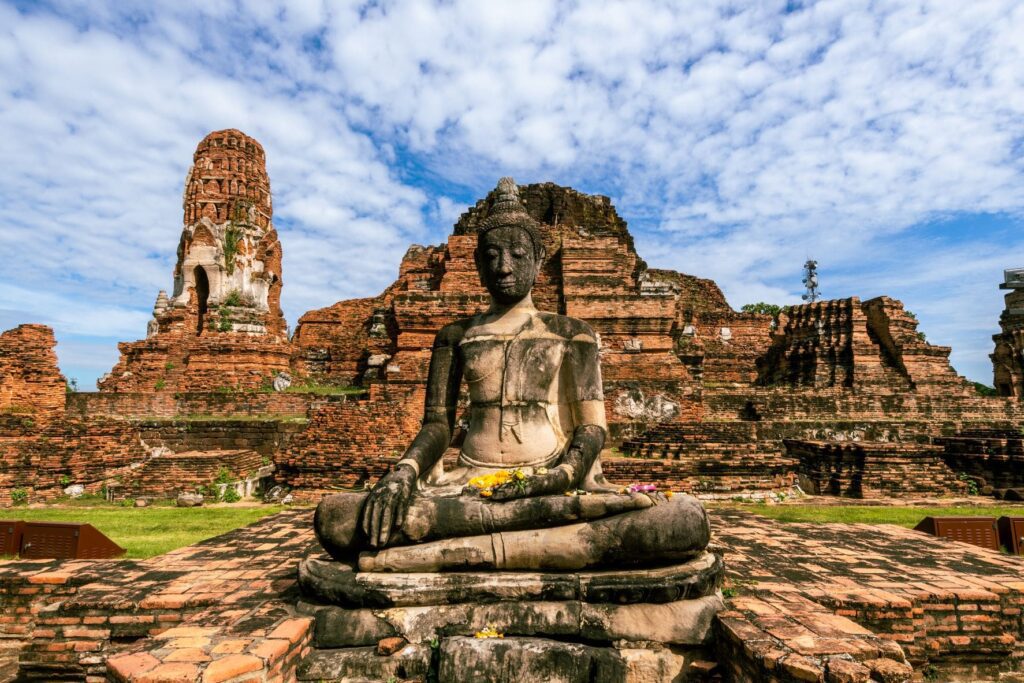
The sandstone Buddha head entwined by the tangled roots of a bodhi tree at Wat Mahathat is undoubtedly the most photographed attraction in Ayutthaya. The famous shot showing the gigantic bodhi tree suggests that Wat Mahathat was one of the oldest and most important Buddhist temples in its era. Established in 1374, the temple had been the seat of the Supreme Patriarch (head of Buddhist monks in Thailand) for centuries. It was built in Khmer style with laterite structures (instead of sandstone) and bricks, enhanced with stucco. It’s well worth walking around the central stupa, which once stood 43 meters high. The temple’s northwestern pagoda is one of the few structures still containing mural paintings from the early Ayutthaya period.
Wat Mahathat, Chikun Road, Ayutthaya
Opening Hours: 8am-6.30pm
Admission Fee: Bt50
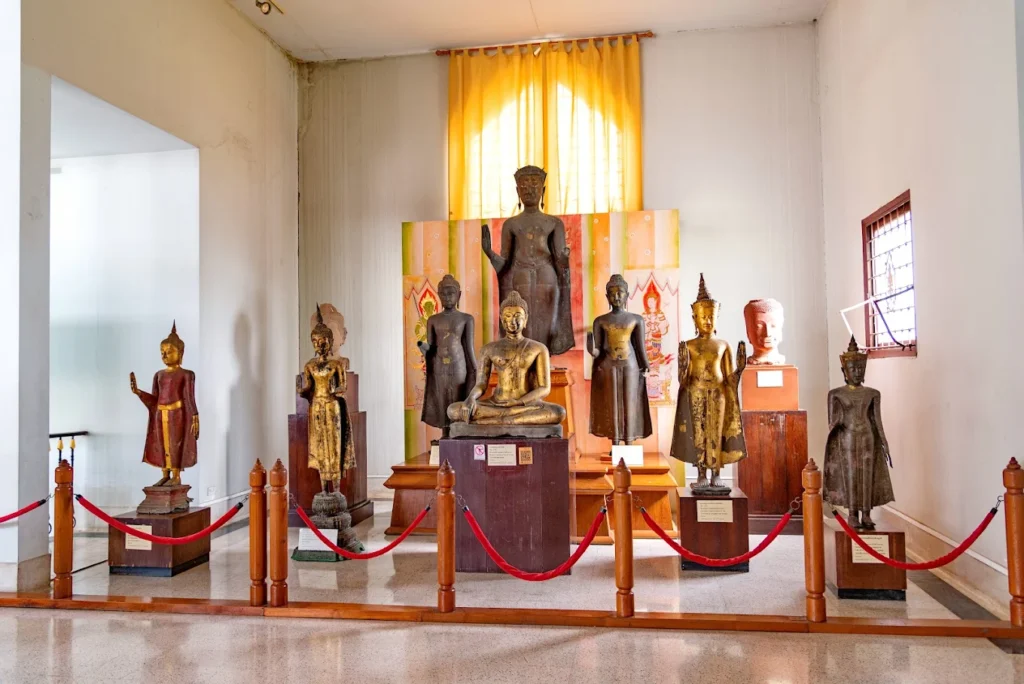
Built from donations and funds from those buying votive tablets excavated from Wat Ratchaburana, Chao Sam Phraya National Museum gives visitors a glimpse of Ayutthaya’s rich history. Treasures like royal gold and Buddha images from the crypts under Wat Ratchaburana and Wat Mahathat are on display. The exhibition highlights are Ayutthaya gold artifacts, such as a golden royal elephant studded with gems, a gold sword, royal insignia, and headgear. Beautiful wood-crafted temple doors and Buddha statues—some dating back to the 7th century—are also on display.
Opening Hours: Open (9am-4pm) from Tuesday to Sunday
Admission Fee: 150 Baht
Telephone: +6635 241 587
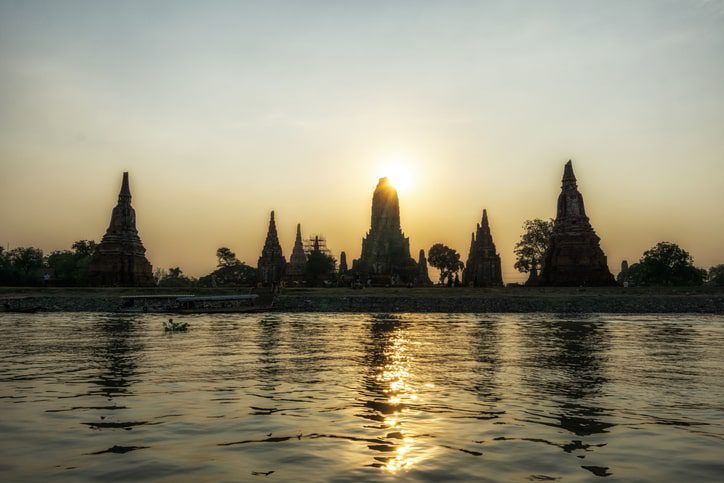
Three rivers—the Lop Buri River, the Pasak River, and the Chao Phraya River—surround the historic city of Ayutthaya. Geographically speaking, the city remains very much the same as what the ancient capital was in the 14th century. The best way to make sense of the city is by taking a slow boat around the island.
Starting as a local pier at Wat Phanan Choeng—the Temple of Big Buddha—the slow boat travels upstream along Ayutthaya’s eastern side. As the boat leaves the city behind, scenes of the riverside roll in like a slideshow: Buddhist temples, traditional Thai houses, time-worn wooden houses, a half-sunk rice barge, and villagers on small sampans.
On the far east of the island, the boat meanders past the Royal Elephant Kraal Village, an elephant care center. In the past, the animals played essential roles as war elephants. Now in Ayutthaya’s peaceful corner, the giant creatures do not have to go to any battlefield. Every evening, they take turns bathing in the river. Watching the docile giants roll around in the shallow water is a beautiful moment.
From the Pasak River, the boat heads out to the northern part of the island and descends to the Lop Buri River. This waterway winds past the Royal Palace ruins, the historic temple of Wat Cheong Tha, and destroyed stupas.
The Lop Buri River joins the Chao Phraya River on the western side of the island. From the west side, the majestic Chao Phraya River runs past the ruins of Wat Chaiwatthanaram. From the boat, you can soak up views of the sunset over the magnificent historic temple.
Cruising around the Ayuthaya island is like stepping back in time.
Visitors can see historic Buddhist temples, a Roman Catholic church, Muslim mosques, and villages float by. You can’t miss the bright yellow St. Joseph’s Church, even from a cruising boat. Founded in the late 17th century, St. Joseph’s Church was the center of the French Catholic missionary until the ancient Siamese capital’s sacking.
Boating is one of the most enjoyable ways to explore Ayutthaya. Each bend of the river brings a new surprise, including the ancient port of Pom Phetch Fort, where the trip comes to an end. The fort is tucked away on the southern-most side and was Ayutthaya island’s first line of defense. This southern outpost is also the Chakri dynasty’s birthplace, a current ruling royal house of Thailand. Before the fall of Ayutthaya, the Chakri dynasty founder—King Rama I—was born and raised here.
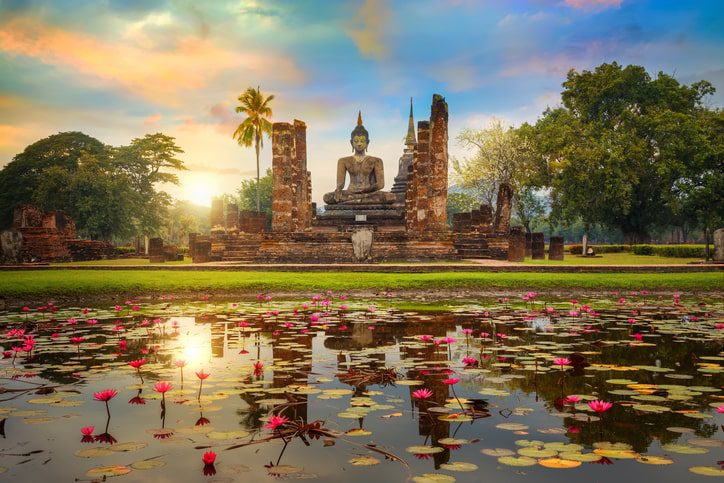
Multi-Cultural Foreign Quarter
Ayutthaya was a cultural melting pot with more than 400,000 Chinese, Greek, Portuguese, French, Japanese, Dutch, and Persians living around the capital. A trip to the foreign quarter of Ayutthaya is an opportunity to cherish the historic settlements’ multi-cultural environment.
The international communities lived beyond the city walls. Most of them settled around St. Joseph Catholic Church in the southern part of the city.
Founded in 1666, St. Joseph Catholic Church served as the French Catholic mission center. It played a significant part in Ayutthaya’s politics and economy until the Burmese marched into the city in 1767. In the present-day, the Catholic church is bright and shiny in Romanesque style. It draws faithful Christians for a mass on Saturday evening and Sunday morning. From here, the Muslim community is a short drive away.
Ayutthaya has Muslim communities that could trace their roots to the Persian, Arabian, Turkish, Malay, and Cham traders who made Ayutthaya their home over the centuries. Most of the Islamic people who settled along the Chao Phraya River made a living by making strong rope for ships and selling fabric from India and the Middle East.
Your next stop is the Portuguese Village. On the west bank of the Chao Phraya River, you can see the historic foundation of the Dominican Church of San Petro and the graveyards stretching along the waterfront. The Portuguese were the first European nation here, arriving at Ayutthaya in the early 16th century. They contributed to the kingdom with their skills in trading, shipbuilding, and fighting.
Opposite the Portuguese settlement is the Japanese Village on the east bank of the Chao Phraya.
From the 1580s to the 1630s, Japanese merchants, mercenaries, and Catholic exiles migrated to Ayutthaya. They contributed their knowledge and skills to the Siamese court. Yamada Nagamasa, the most famous Japanese person in Ayutthaya, became the lord of Nakhon Si Thammarat before being poisoned. With her sweet and bitter tales, Maria Guyomar de Pinha, a remarkable Siamese woman with a Japanese bloodline, left her mark on Portuguese inspired cuisine in the court of Siam. The Japanese settlement stretched for a kilometer along the east bank. The museum and peaceful garden draw visitors in with an exhibition telling how the Siamese and Japanese were bound together through sugar and rice wine.
About two kilometers north of the Japanese Village is Baan Hollanda, a historic Dutch settlement.
The Dutch followed the Portuguese to Ayutthaya in 1608, looking for a new economic frontier. They established a community, with a spectacular structure known as the Red Building made of stone, not far from Petch Fortress. The Burmese conquerors razed the Dutch compound, and the famous Red Building was reconstructed to house artifacts found on the historical settlement. After you see the exhibitions, grab a Heineken at the on-site café. Chill out at the waterfront, which was once a port for the East India Company, and review the trading tie, then and now, between Siam and The Netherlands.
The Hokkien Chinese community scattered around Petch Fortress and the temple of Wat Phanan Choeng. Here, at the Pa Sak and Chao Phraya rivers meeting point, the Chinese made money as foreign ships and junks unloaded their cargo at the fortress. The historic fort and riverside boardwalk are ideal for a leisurely stroll with a scenic river view before calling it a day.
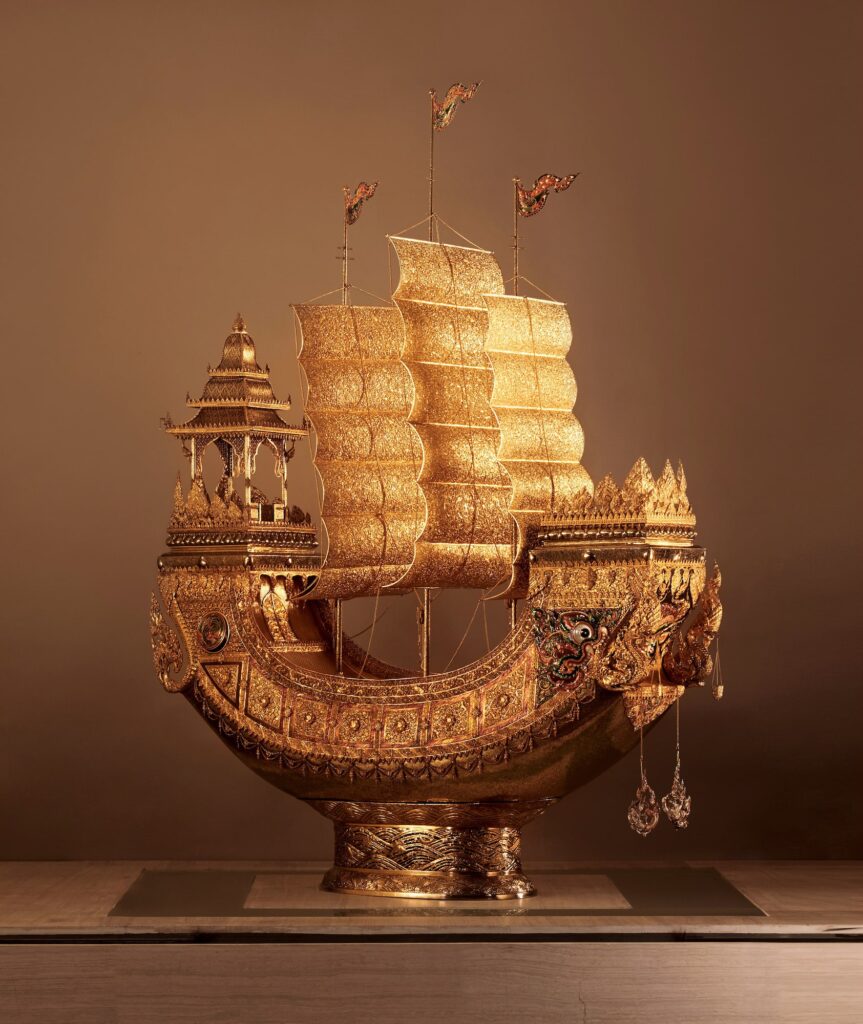
Masterpieces at Arts of the Kingdom Museum
As part of Her Majesty Queen Sirikit The Queen Mother’s patronage to Thailand’s craftsmanship and artistry, the Art of the Kingdom Museum exhibits the masterpieces of Thai handicrafts. Magnificent as they are captivating, many pieces are one-of-a-kind, classical masterpieces created with ancient techniques that date back to the Ayutthaya period. Other impressive items are the result of the new methods explored during the reign of King Rama IX. Highlights include the Gold Niello Bhudthan Throne, the Gold Damascene Bhudthan Throne, the exquisite model of the Sri Suphannahongse Royal Barge of the First Reign, the Five-peak Busabok Wooden Sculpture, the Embroidered “Himavan Forest” Screen, and the Carved Wood Screen with the Legend of “Benjaratana.”
Arts of the Kingdom Museum, Bang Pa-In, 20-minute drive from Ayutthaya
Opening Hours: Open (10am-3.30pm) from Tuesday to Sunday
Admission Fee: 75 Baht (student and senior citizen) and 150 Baht (adult)
Telephone: +6635 352 995
Website: www.artsofthekingdom.com
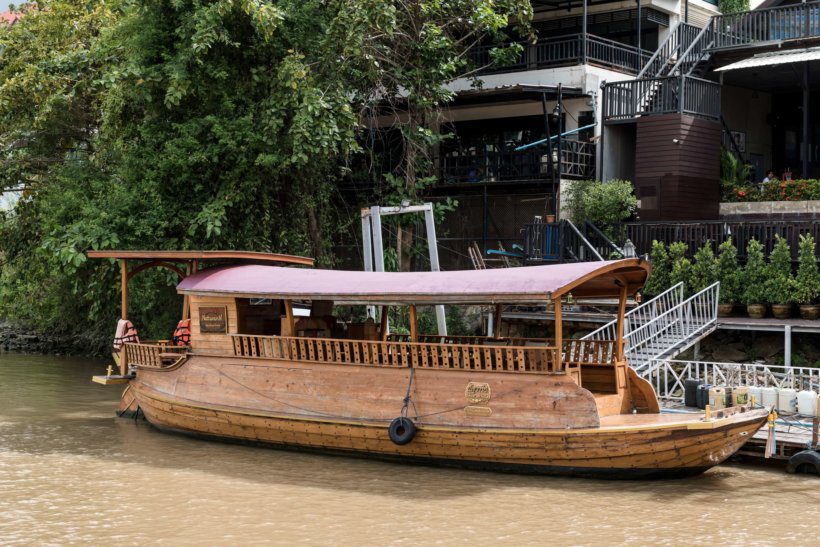
Timeless Small Communities Koh Kerd
Nestled along the Chao Phraya River, Koh Kerd is home to small communities surrounded by a network of smaller waterways. There is something pure and timeless about Koh Kerd. Imagine an extensive, untouched, serene section of the Chao Phraya River fringed by marshes and floating gardens. Wooden houses and rustic terraces rise above the water. Locals now open their doors for day-trippers and weekenders who want to experience the local way of life. Visitors can experience various activities like gathering local plants for traditional medicine and catching giant freshwater shrimp for dinner. The home-cooked food is fresh, filling, and always served with smiles. Koh Kerd enjoys the best part of the Chao Phraya River, where the river scenery is mind-blowing. You can hop on and off a long-tailed boat to visit the temple and the local food market.
Koh Kerd, Bang Pa-In district, 20-minute drive from the city of Ayutthaya
Call +6681 372 6038
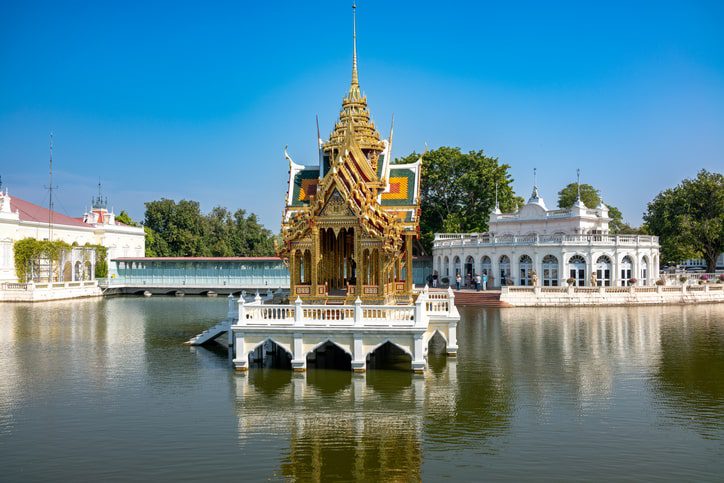
Splendid Summer Bang Pa-In Palace
Established in the 17th century as a summer palace for King Prasat Thong of Ayutthaya, Bang Pa-In Palace was abandoned and fell between the late 18th and early 19th centuries. The palace was then revived in the 19th century by King Rama IV. Most of the European style buildings were constructed between 1872 and 1889 by King Chulalongkorn (Rama V). The summer palace was sometimes used for receiving foreign dignitaries such as Nicholas II of Russia, Queen Elizabeth II, and Fumihito, Crown Prince Akishino. Bang Pa-In is well worth visiting for its rare beauty and mix of architectural styles, including a Chinese design of the observatory hall, the traditional Thai pavilion, and the Swiss Chalet. The palace grounds, dotted with trees and gardens, are ideal for a walk. Put yourselves in modest dresses when visiting the summer palace. Within walking distance from Bang Pa-In Palace is Wat Thammaprawat, established in the late 19th century in the Gothic Revival style. The small ordination hall is stunning with pointed arch and windows, steeply pitched roofs, and ornamental tracery. The riverfront temple ground has a peaceful garden and scenic view of the Chao Phraya River. To get to the palace, take a train from Ayutthaya (15 minutes) to Bang Pa-In railway station and then get a tuk-tuk to the palace, which is about two kilometers away.
Bang Pa-In Palace, Bang Pa-In, 30-minute drive from the city of Ayutthaya.
Hours: open daily (8am- 4pm)
Price: 100 Baht
Telephone +66 35 261 044
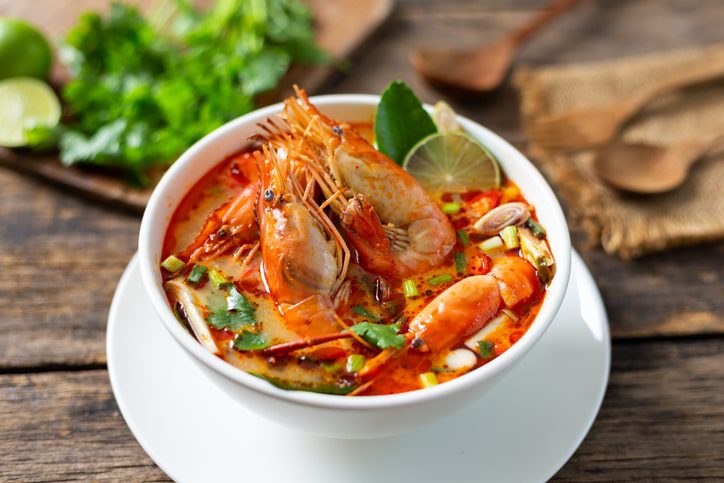
Food Fever
In Ayutthaya, the local food comprises different cuisines from various ethnic groups that came here centuries ago. Some food like “tom yam” spicy soup is authentic and original, while the Persian cuisine inspired a creamy and relatively sweet Massaman curry. A sweet treat known as foi thong is similar to the Portuguese fios de ovos.
chill cafes, and irresistible street food. Treat yourself with Ayutthaya’s signature dishes like giant river prawn. A bowl of sensational kuay tiew rua (boat noodles), roti sai mai (thin roti wrapped around cotton candy), and some egg yolk tarts like thong yip and thong yod should be on your tasting list during your vacation in the old town.
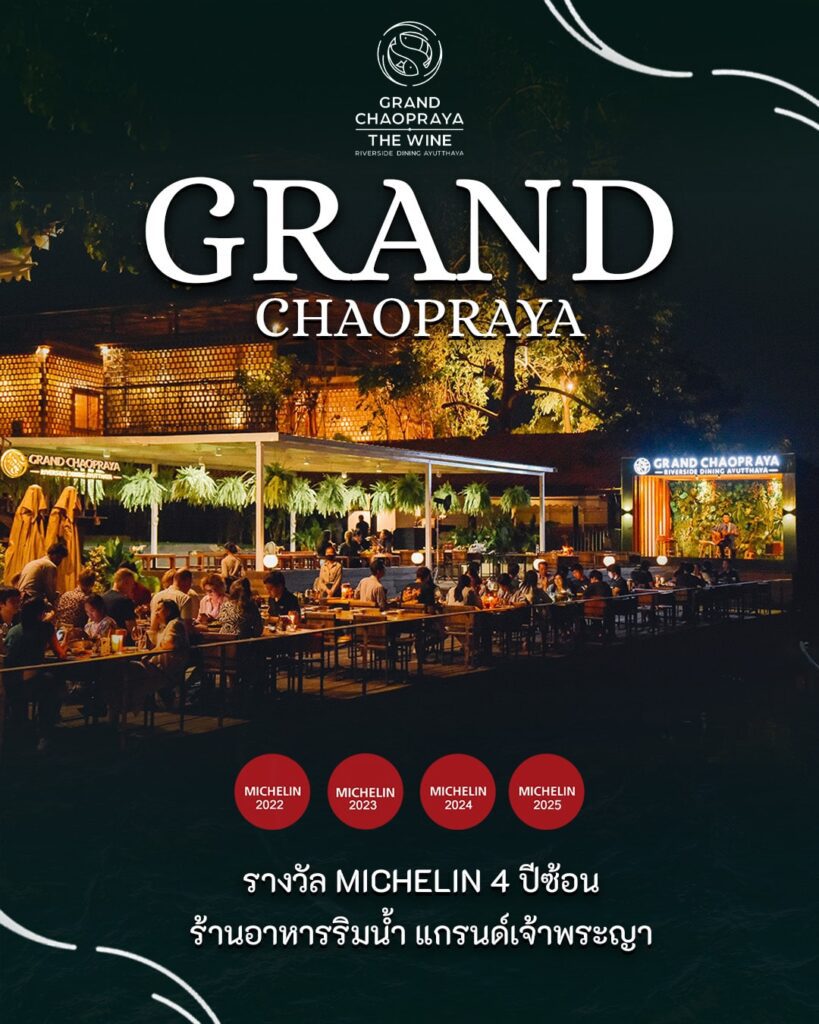
Drink at Wine Ayutthaya
With a spiral stair showcase and stunning architecture, Wine Ayutthaya is a game-changer in Ayutthaya’s dining scene. It brings bottles of Cabernet Sauvignon, Pinot Noir, Shiraz, Malbec, Riesling, and Sauvignon blanc to the province. Part of the Grand Chaophraya Ayutthaya restaurant, this wine house lets discerning drinkers enjoy a scenic view of the Chao Phraya River with a chill Sauvignon Blanc. The vibe is relaxed and friendly with the sounds of laughter, conversation, and the clinking of glasses adding to the food and wine. The food menu brings the best of Ayutthaya (giant fresh river prawn, sheatfish, and more) to the table.
The Wine Ayudhaya, 42/1 Ban Roon, 20-minute drive from downtown Ayutthaya.
Opening Hours: Open daily (11am-10pm)
Telephone: +6681 942 1666

Out-of-the-Box Dining at Busaba Cafe & Meal
This stylish and cozy restaurant on the northern side of Ayutthaya extends your comfort of the ancient city’s delicacy and signature dishes. The restaurant makes every dish tastier and more fashionable with an eclectic attitude. They serve spaghetti with Pad Thai sauce and giant freshwater prawn. The flat noodles with spicy salsa sauce and prawn salad is amazing. Roti Sai Mai, a typical roadside sweet treat of cotton candy burrito pancake, finds a new twist on top of an iced latte. Busaba Cafe & Meal is an ideal place for lunch around the historical park.
Busaba Cafe & Meal, Uthong Road, Ayutthaya
Opening Hours: 9am-8pm
Telephone: +6661 593 3836
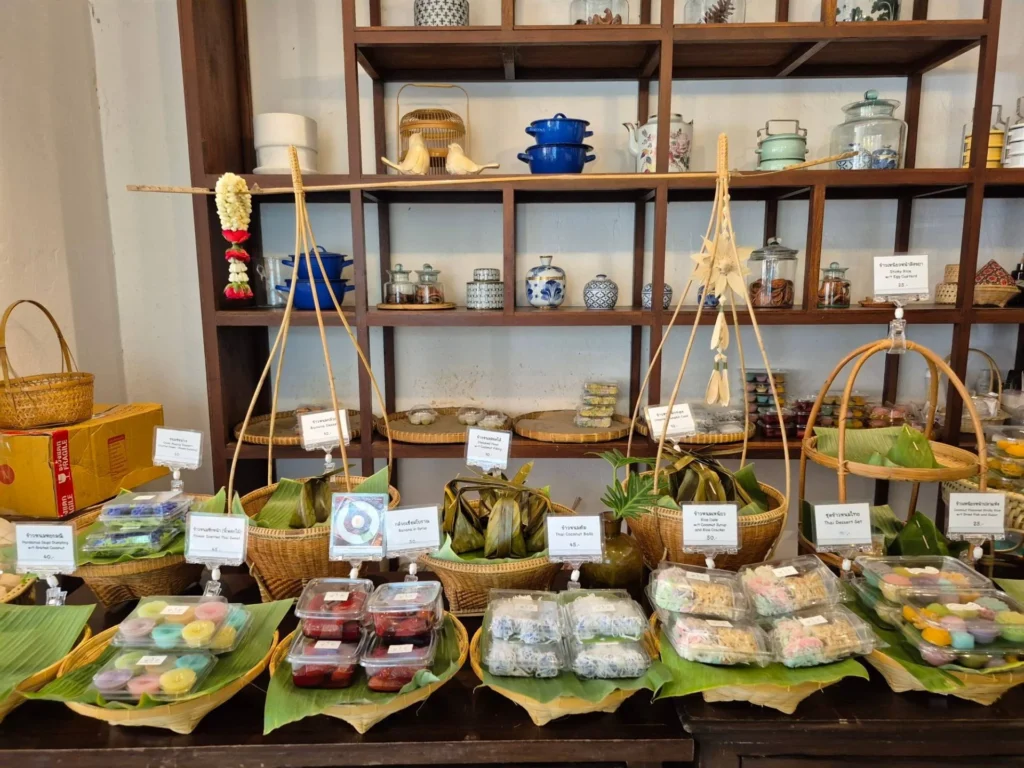
Sweet Treat at Baan Kao Nhom
A patissier at Baan Kao Nhom can thank Maria Guyomar de Pina (a Siamese woman of mixed Japanese-Portuguese-Bengali ancestry) for creating auspicious Thai desserts for the royal palace in the 17th century. Maria’s desserts such as Thong Yip (flower egg yolk tart), Thong Yod (round egg yolk tart), Foi Thong (sweet shredded egg yolk) were a real treat at the Siamese royal court four centuries ago. You can find the rich, eggy, sweet, creamy, and deliciously decadent treats at Baan Kao Nhom. This little shop—located in the southern part of the historical park—also serves good ice cream and drinks at reasonable prices.
Baan Khao Nhom, Pratu Chai, Ayutthaya
Opening Hours: 8am-6pm (Mon – Fri) 9am-7pm (Sat – Sun)
Telephone: +6697 921 9465
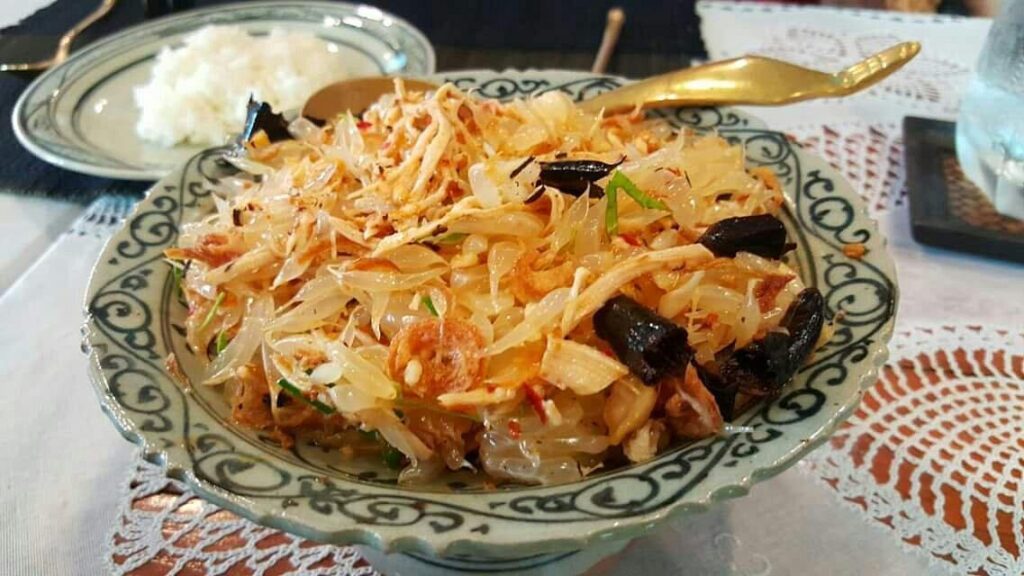
Authentic Thai Tastes by Ruen Tubtim
When it comes to authentic Thai food served in a riverfront traditional Thai house, few places in Ayutthaya can match the Ruen Tubtim restaurant. Perched over the Pasak River in the northern part of the historical park, the restaurant is part of the floating community around the small islet of Koh Loi. Thai food here is tasty and original. Try pomelo salad (Yum Som-O), sweet and sour soup with fried egg and prawns (Kaeng Som Cha-Om Kung), and steamed red snapper served with spicy sauce (Kapong Rad Prik). Foodies should not miss the creamy and nutty chicken curry (Phanaeng Kai) and blistered hard-boiled eggs in sweet and sour tamarind sauce (Khai Luk Khoei).
Ruen Tubtim, 24/2 Koh Loi, Ayutthaya
Opening Hours: Open for lunch and dinner
Telephone: +6685 919 9054
